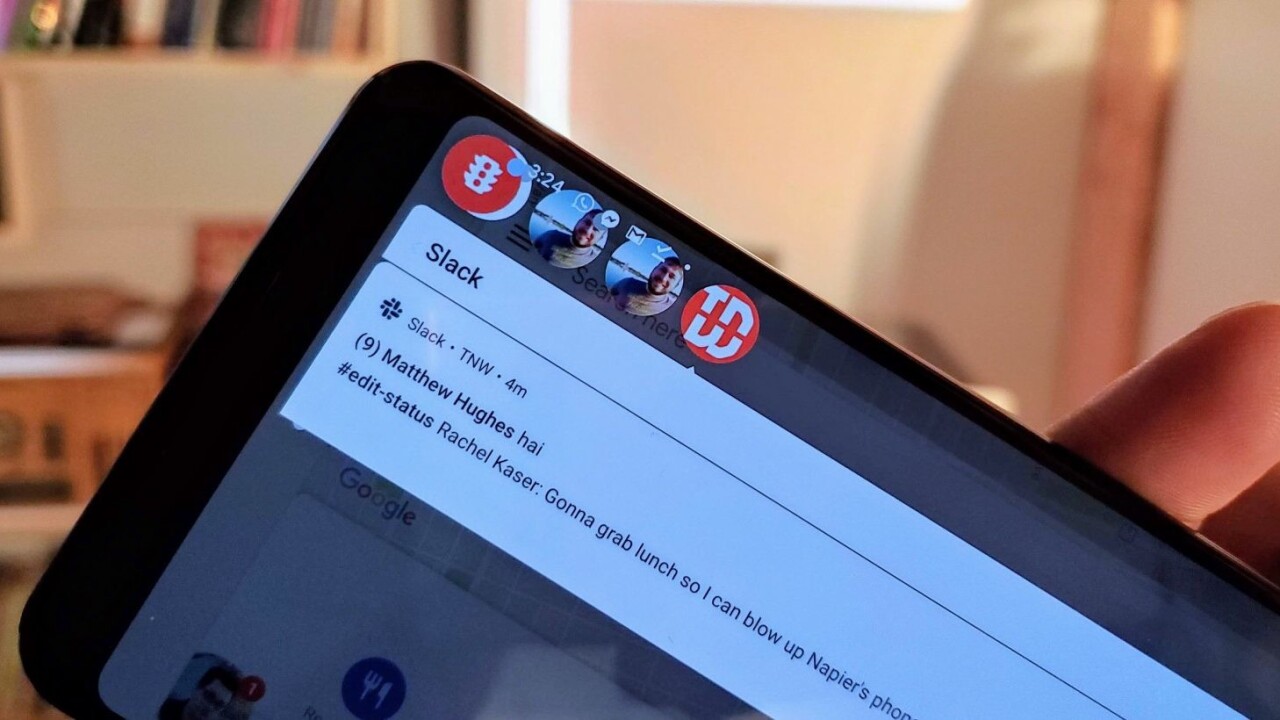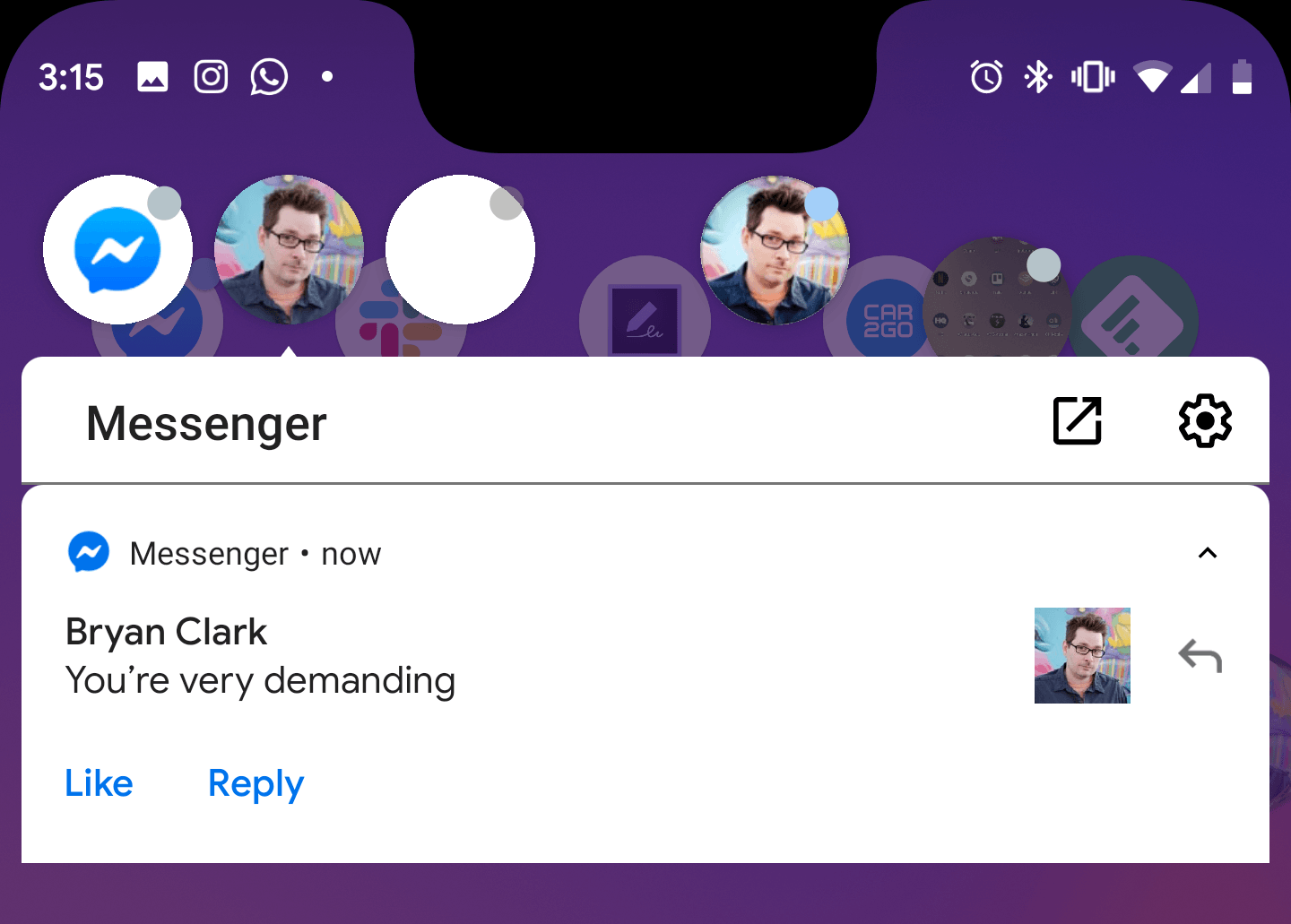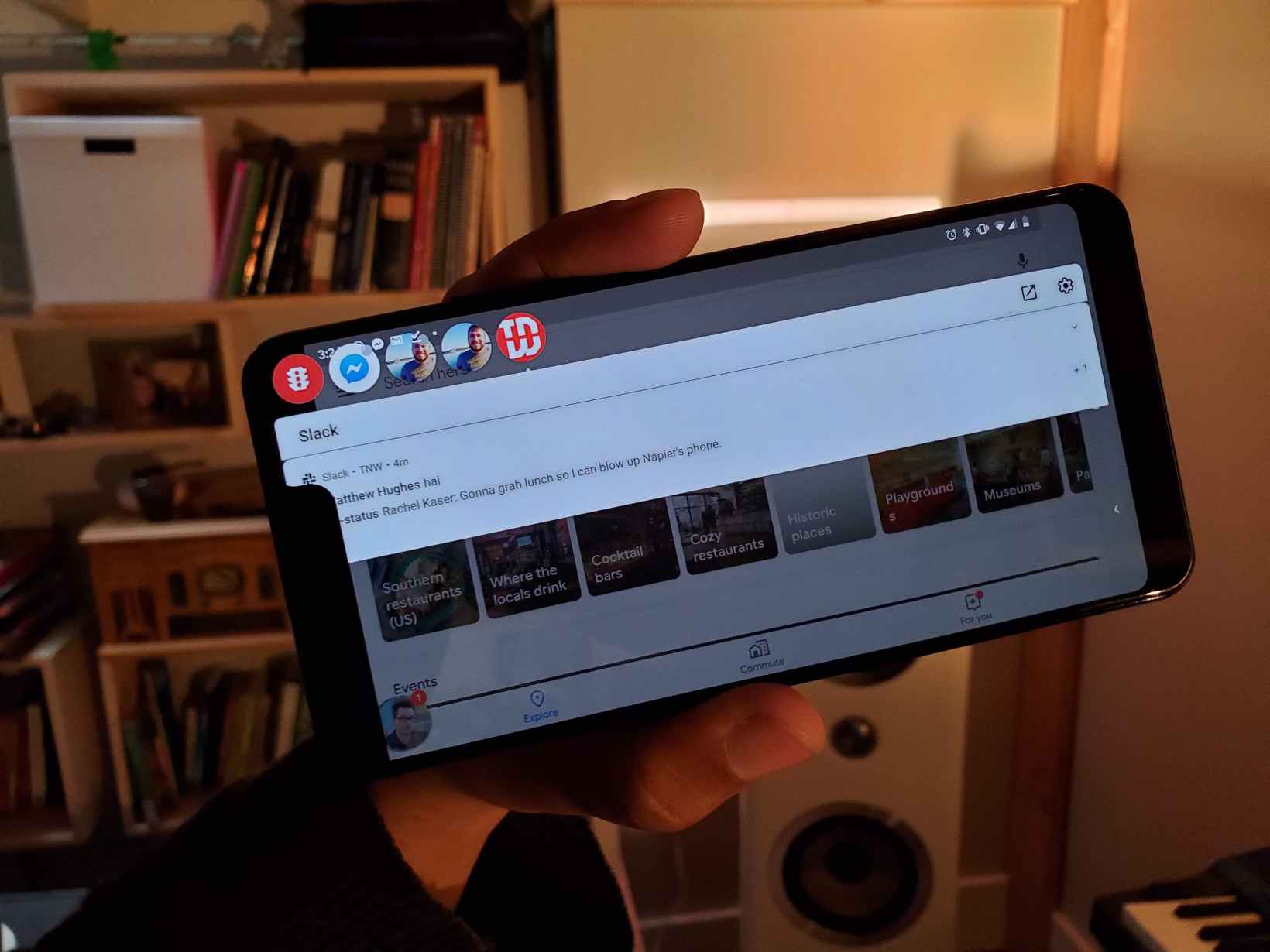
Despite multiple redesigns and fundamental changes, one thing has remained true since the very first Android phone: you swipe down from the top to access your notifications. But Android Q Beta 1 shows Google is at least considering an alternative.
As first reported by 9to5Google, Android Q includes a hidden feature that duplicates your notifications in a small floating ‘bubble.’ If you use Facebook Messenger on Android, you might know what I mean. Facebook calls the feature “chat heads” but it’s essentially the same concept: an always-on-top bubble that you can move around your screen and use to quickly access conversations without leaving your existing app. The Phone app on Pixel devices behaves similarly.

Android Q’s notification bubbles use the same concept, except for all your notifications. It essentially duplicates the functionality of the notification shade in bubble form.
There are a few benefits I can see:
- The bubbles let you preview who notifications are from, rather than a tiny icon in the status bar (assuming you hadn’t seen the initial alert).
- With phones growing larger by the year, the floating bubbles can be placed somewhere much more thumb-friendly than the top of your screen.
- Right now, the bubbles only serve notifications and are dismissed once you read them. But in the future, they could replicate Facebook Messenger’s functionality and allow you to maintain an ongoing conversation or quickly access app functionality.
Unfortunately, right now the feature is super buggy. Notifications seem limited to five apps, sometimes the bubbles don’t move where you want them to, and yet other times they’re cut off by the Pixel 3 XL’s notch. And if you already use Facebook Messenger, you’ll receive confusing duplicate notifications.

There’s a reason it’s hidden. Still, if you want to give it a go, you can use a couple of ADB commands:
- adb shell settings put secure experiment_enable_bubbles 1
- adb shell settings put secure experiment_autobubble_all 1
To disable the feature, enter the following commands and restart your phone:
- adb shell settings delete secure experiment_enable_bubbles
- adb shell settings delete secure experiment_autobubble_all
(If you don’t know what ADB commands are, you probably shouldn’t be trying experimental features out anyway. Do your Google-Fu.)
It’s also worth that system-wide app bubbles aren’t an entirely original idea. Samsung phones, for instance, allow you to run apps in floating windows, which you can then ‘minimize’ into floating bubbles that you can access at any time. There are also a variety of apps in the Play Store that provide roughly similar functionality.
Still, I’m glad Google is at least considering reworking the finger gymnastics currently required to access the notification shade. We’ve no idea whether this will see the light of day in a public release, but we’ve contacted Google for more information and will update this post if we hear back.
Get the TNW newsletter
Get the most important tech news in your inbox each week.





